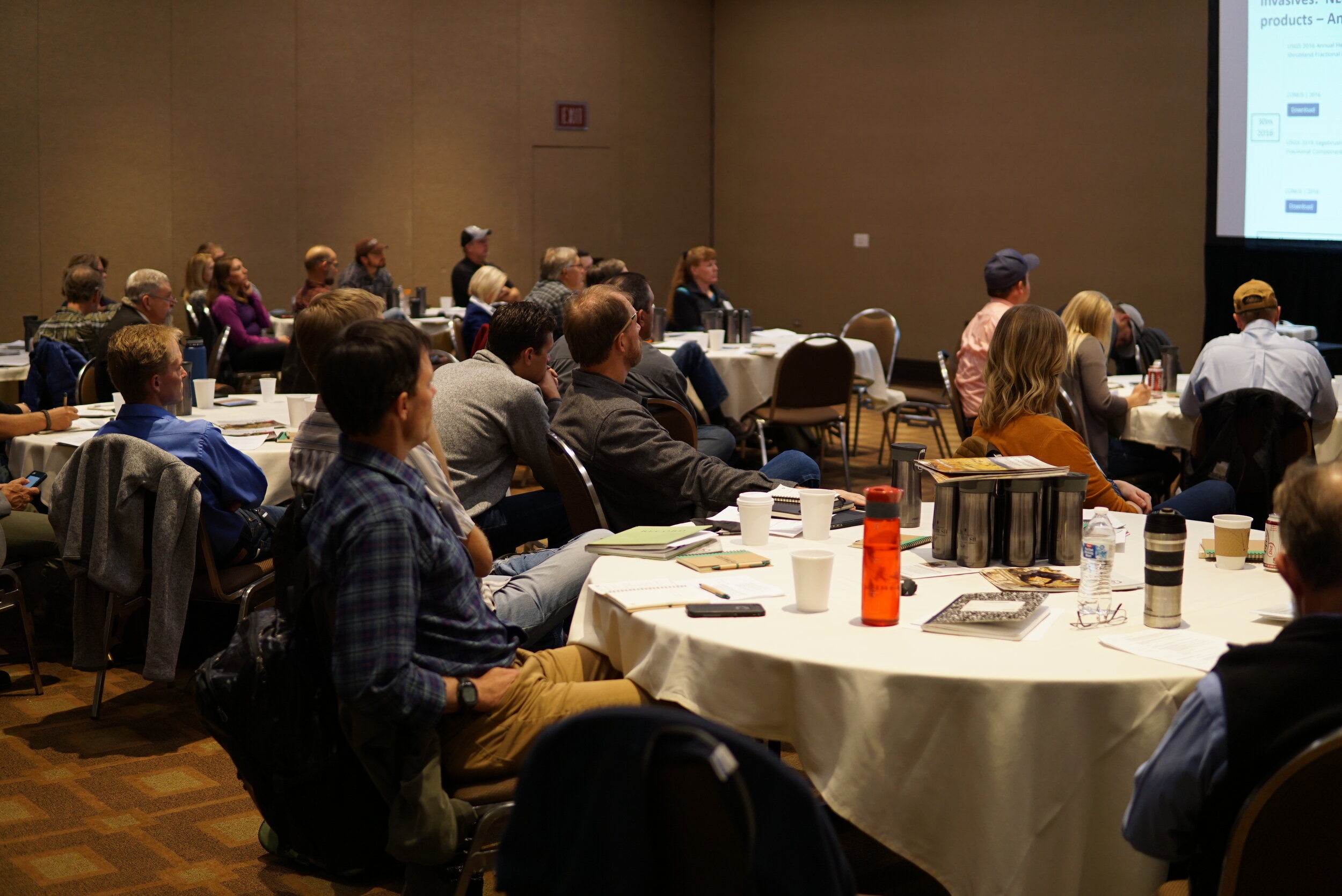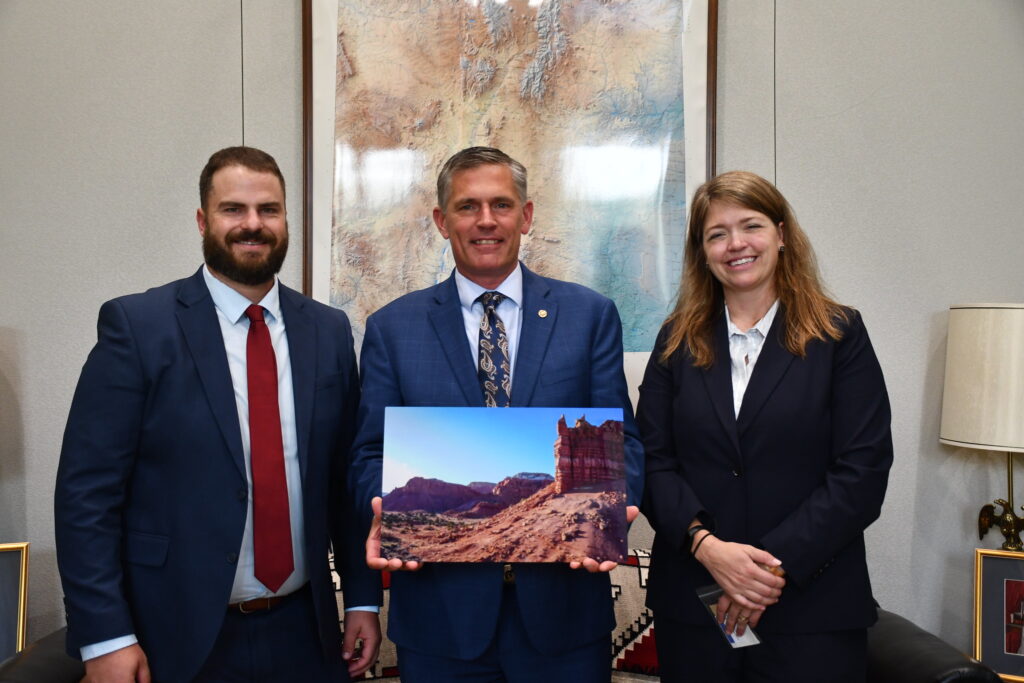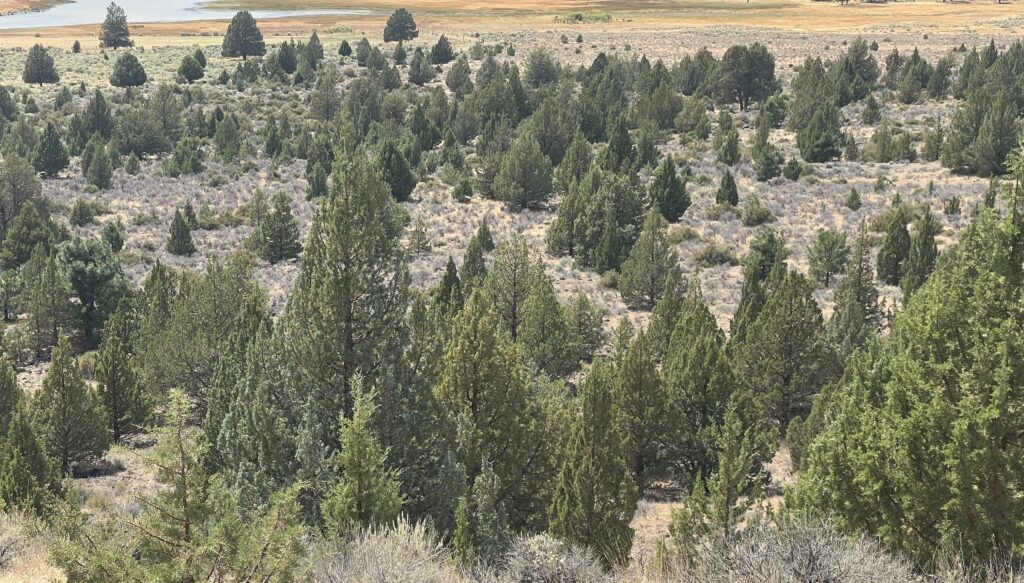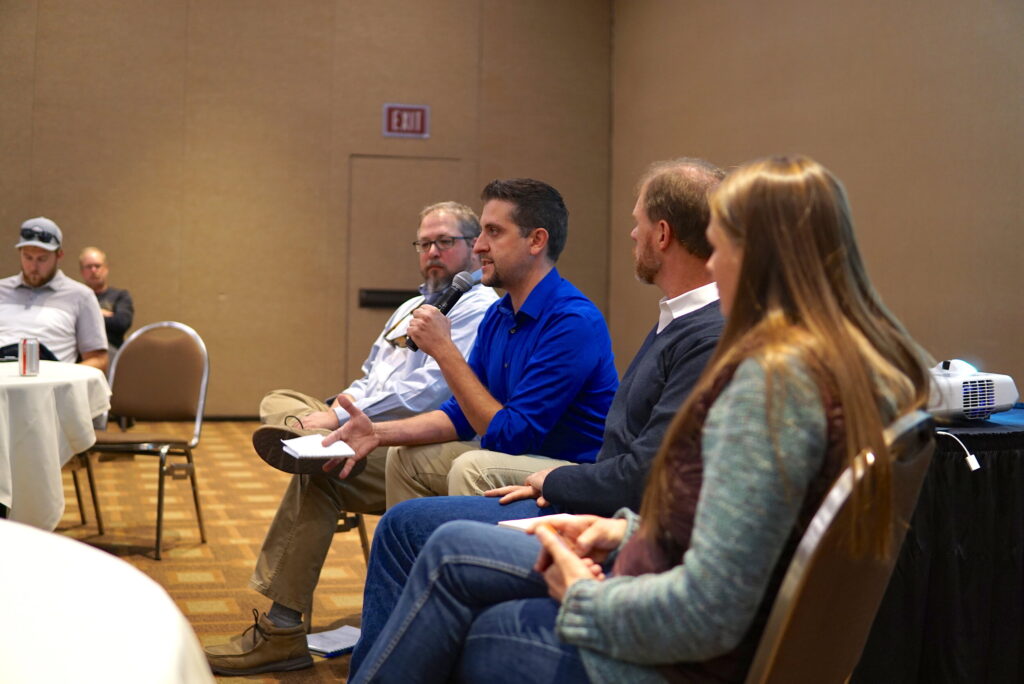

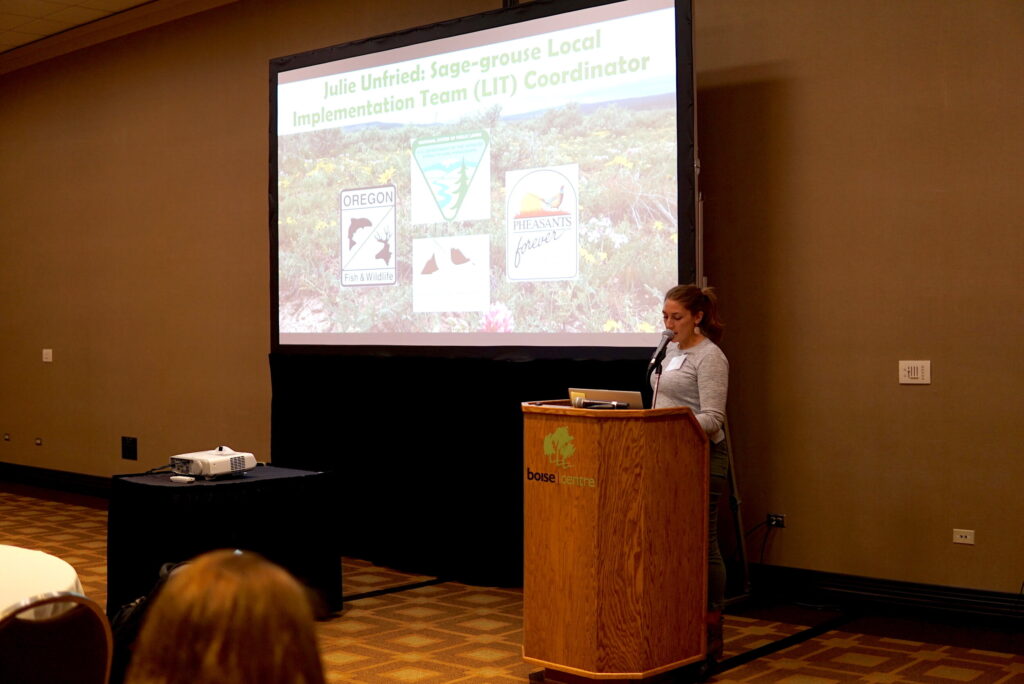
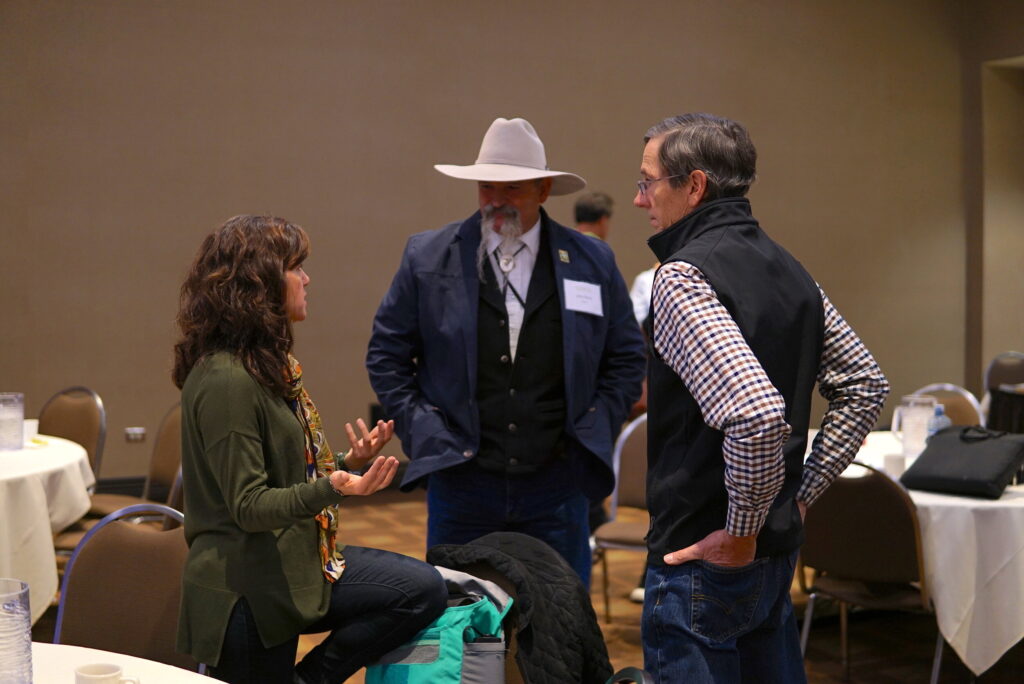
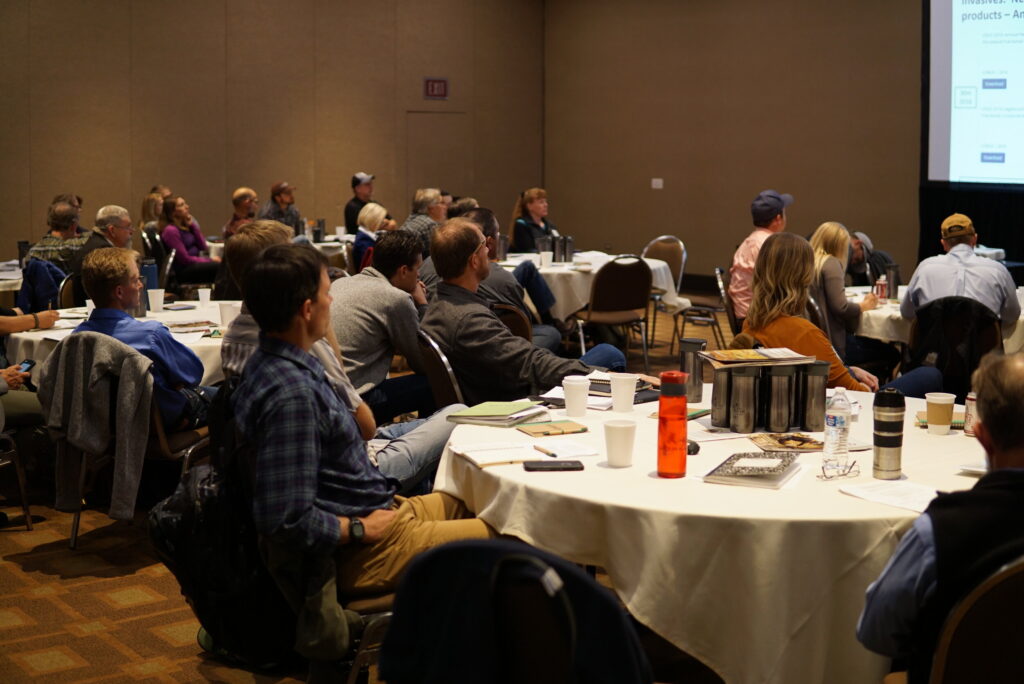

Post by Mandi Hirsch, IWJV Sagebrush Collaborative Conservation Specialist
Last month, the first Annual Sagebrush Collaborative Forum took place in Boise, Idaho, with 50 leading conservation professionals who are teaming up with the Partnering to Conserve Sagebrush Rangelands initiative. Attendees from across the West gathered to share their successes, challenges, and ideas around collaborative sagebrush conservation.
“Managing the health of rangelands is not just a western or even North American issue, it is a global issue. Many countries are struggling with the degradation of rangelands so we can and are learning from each other,” said Gordon Toevs, Bureau of Land Management (BLM), Chief, Division of Resource Services. “This first annual forum was a great opportunity to engage a group of on-the-ground rangeland professionals who are working to improve and sustain rangeland health.”
The overarching purpose of this meeting was to bring our Sage Capacity Team, BLM, and other federal, state, community, and non-governmental partners together for hands-on, peer-to-peer learning to provide numerous resources and contacts, and further their efforts in the landscapes they work.
Keynote speaker BLM Idaho State Director John Ruhs, and IWJV Board Member, said that the sagebrush ecosystem is both strong but fragile, a complicated land that takes time to understand. Daunting problems like mega-wildfires and invasives species are extraordinary problems that are going to require extraordinary thinking, which will require teams of people working in a unified purpose.
“Solving the problems of the sagebrush-steppe is something that none of us can do alone,” Ruhs said. “We need to blast through lines on the map, blur lines of authority. We need to look at all potential cooperators, even if we think we have little in common on the surface. Most of all, we need to step up our level of thinking, improve our creativity and develop new approaches to old problems.”
Speakers from the Intermountain West Joint Venture (IWJV) and other BLM staff followed Director Ruhs and helped build understanding and awareness about the BLM-IWJV partnership, the origin and intent of our intra-agency agreement, as well as anticipated outcomes. With this foundation laid, attendees participated in presentations and panels ranging from direct on-the-ground project implementation to ways to further cross-boundary partnership to implementation of the science and decision support tools that enhance targeted planning and evaluation of conservation practices at the landscape-scale.
Throughout the forum, three key themes arose from the presentations as well as in the questions posed by the audience:
- Technical transfer of the latest science and decision-support tools is crucial and we are working to do this better;
- Internal and external communications are integral to collaborative rangeland conservation and we all need to play a role in these efforts; and,
- The growing threat of fire, invasive annual grasses, and conifer encroachment are huge challenges for all partners across the range and we need to continue to share knowledge and resources to help combat them.
These came out of presentations about tools to inform targeted conservation, control rangeland fire, increase landscape resiliency, as well as a panel about community-specific partnership success stories.
Here are a few of the presentations that were delivered at this forum:
- Data and Tools to inform Targeted Projects by Meg McLachlan, BLM
- Enhancing Collaborative Efforts: Why We Need a Movement to Address Catastrophic Wildfire by Jolie Pollet, BLM
- Shared Vision: Science for Resiliency & Cross-Boundary Conservation by Patrick Donnelly, USFWS/IWJV
- A Look Inside BLM’s Project Planning & Integrated Program of Work (IPOW) by Molly Anthony, BLM

Each of the members of the Sage Capacity Team gave presentations about the work they are doing and the success and challenges they experience.
“This forum provided a great setting for me to hear and collaborate with other community-based field people like me,” said Calee Garn, Sage Capacity Team member based in Tremonton, Utah, and coordinator for the Sagebrush Ecosystem Alliance. “Our positions are all really unique but have similar aspects of sagebrush rangeland conservation across the West. By meeting all these people, I now feel connected to so many people that will act as resources, and I’m hopeful for the conservation of the sagebrush sea.”
With these words ringing in our ears we travelled to our home states, often through sagebrush country, energized for the upcoming work we will do together. We greatly appreciate the participants taking the time to make this event a success and look forward to working with them and many others in the future. We hope this forum will assist us and others in continuing and accelerating cross-boundary partnerships and conservation projects West-wide.
If this intrigues you and you want to learn more about how to develop science-based, landscape-scale projects in your state, please contact our staff. For more information on our partnership, visit www.PartnersInTheSage.com.
